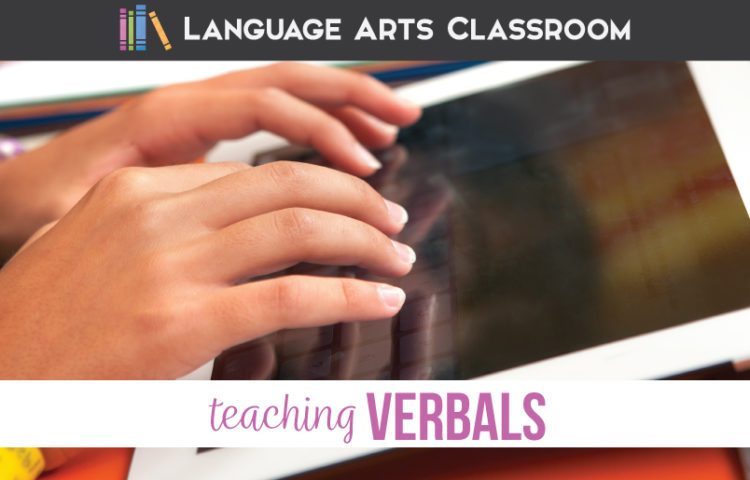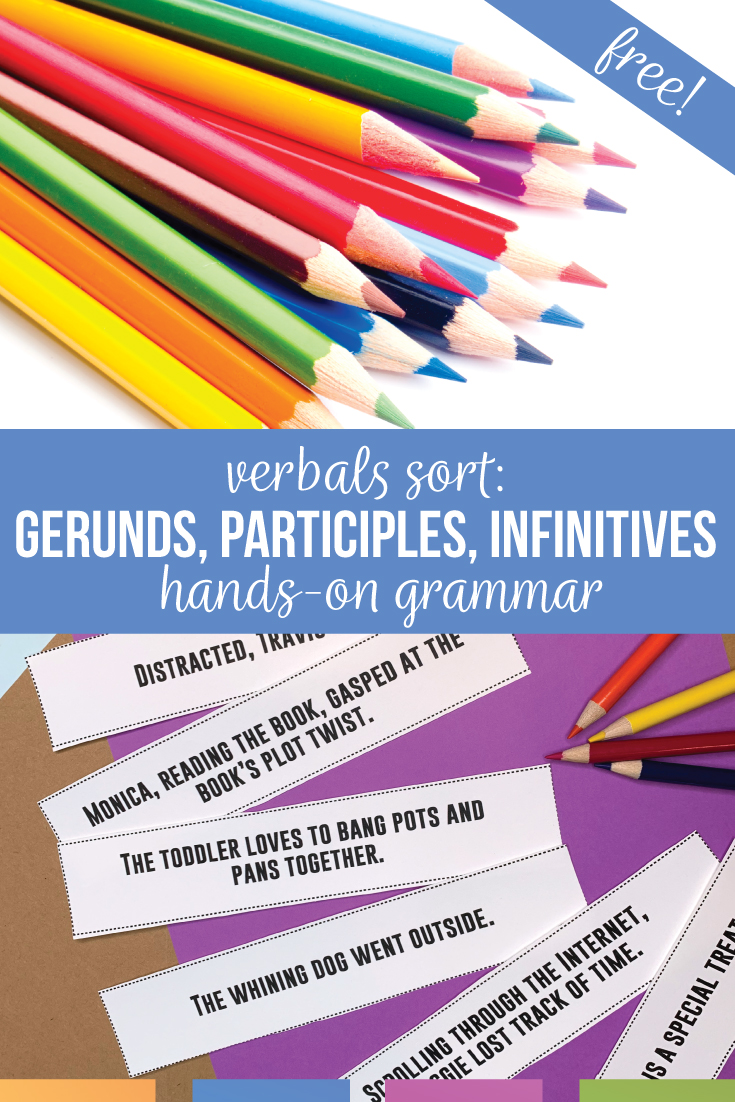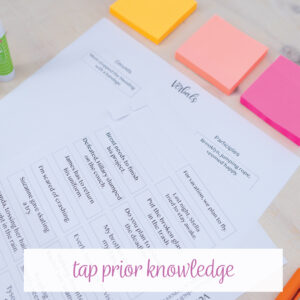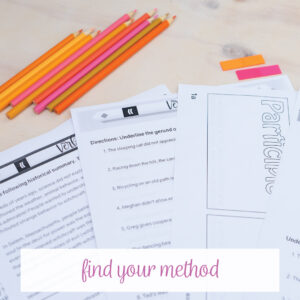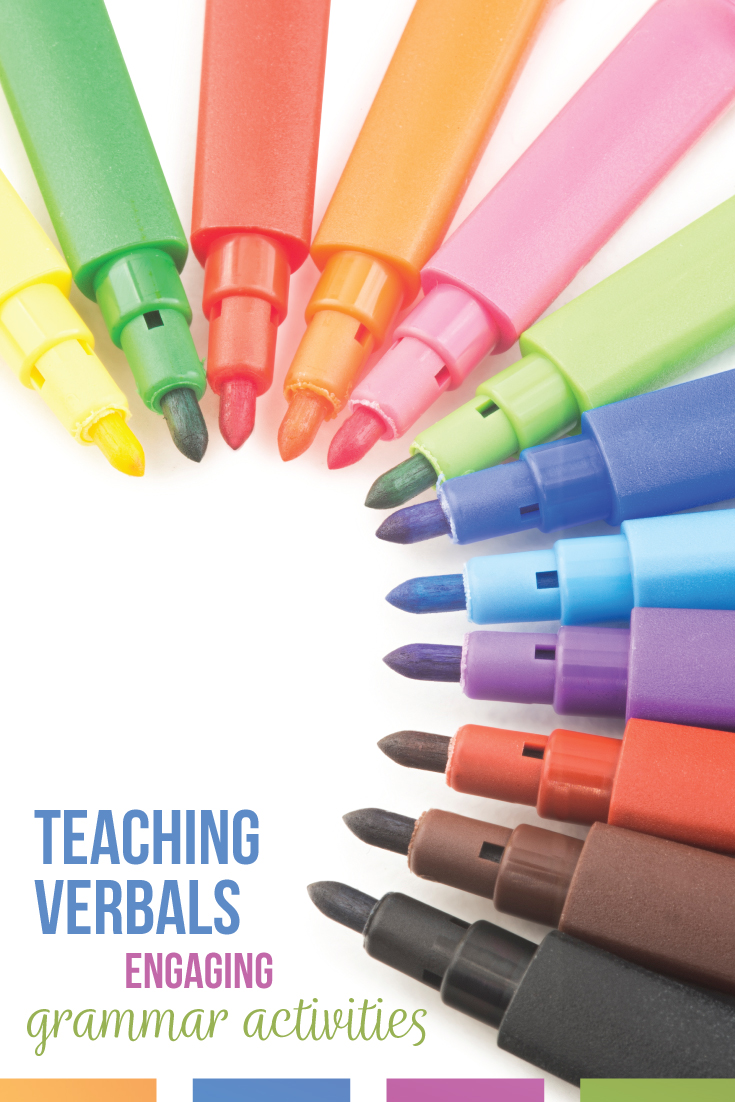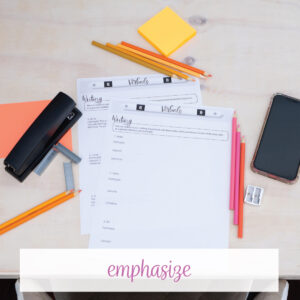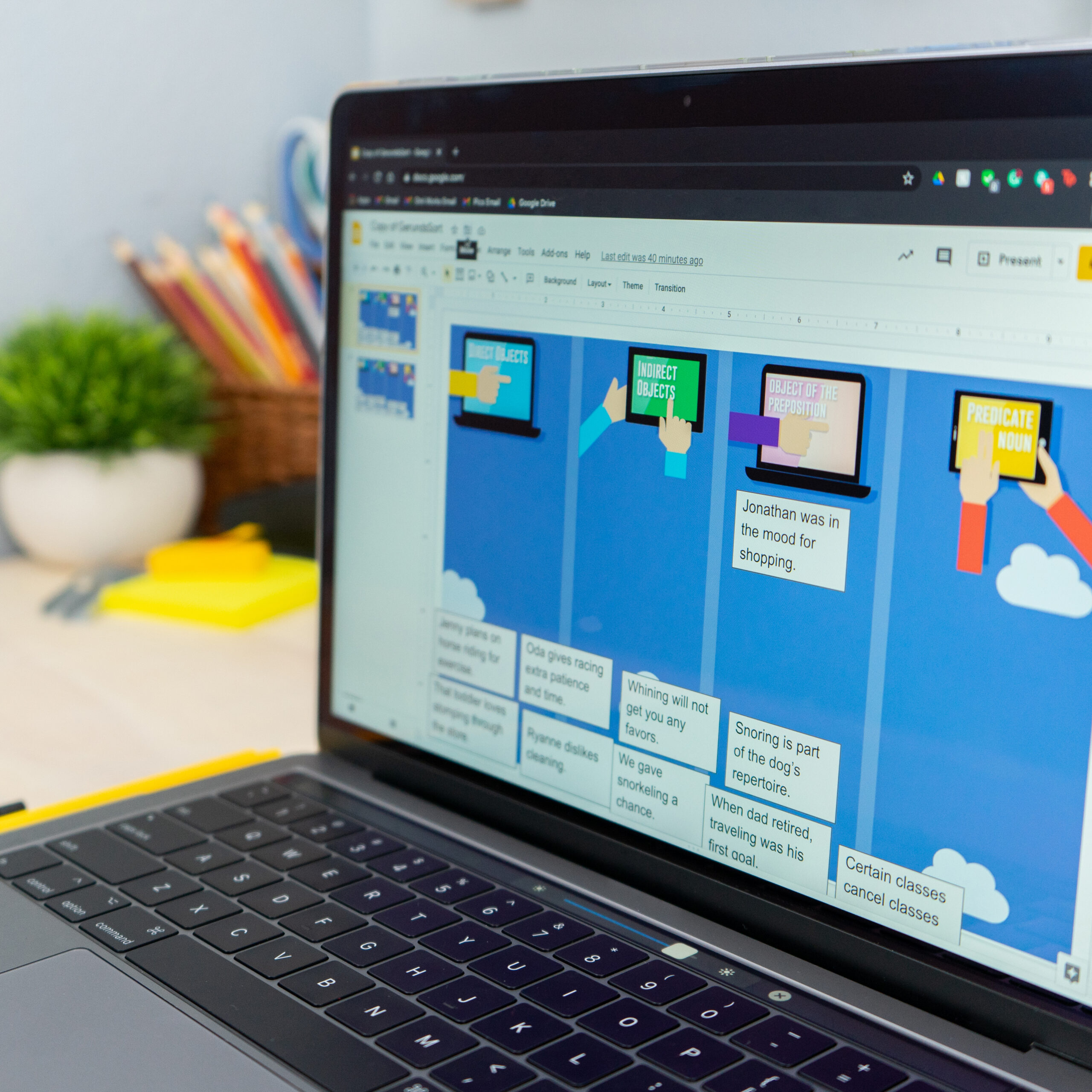Verbals lessons: more than verbal worksheets, actual engaging verbals practice. Teaching verbals can be a fun part of meeting language standards.
Verbals, those tricky little words that look like verbs but aren’t verbs. Yes, the participle, gerund, and infinitive must be taught so that students can use them in their writing for extra spice and punctuate them correctly.
Plus, when they look verbs up in a dictionary, don’t they wonder what “participle” is? (Tell students they should wonder, and that you are here to clarify for them. I promise they will roll their eyes at you.) Part of any verbals practice should be having fun.
Teaching grammar requires some tricks and methods to get students understanding the concepts. I’ve taught verbals to both middle school and high school students, my classroom students, and students prepping for standardized testing. I’ve therefore included lots of ideas I include in a verbals lesson plan; you may not need all of this verbal practice.
I’ve explored how to teach gerunds and infinitives, how to teach gerunds and participles, and how to teach participles and infinitives. Over the years, my approach to teaching verbals has changed. Below, I’ve outlined what works best with my students. I hope you can personalize these ideas for your students.
Older students will need verbals activities for a variety of reasons. (You can download a free verbal grammar sort from my library.) Below, I’ve detailed are my grammar lesson plans for teaching verbals. I’ve been incredibly honest in writing this post about verbals lesson plans and activities. More than likely, you will not use all of these methods for your verbals lesson plan. Take what you need; discard the rest.
To start, I look at standards and recognize where my students are concerning grammar.
Organize
Before you start a verbals lesson plan, decide when you want to teach verbals. For instance…
Understanding verbals and their phrases is the goal of my freshmen students toward the end of the school year. I recognize that the Common Core lists verbals in seventh and eighth grade, but I always need to teach them with freshmen. Sometimes, sophomores don’t understand verbals, but with that age group, I focus more on punctuation and use in writing. With juniors and seniors, I focus more on the ‘create’ part of Bloom’s and ask them to judge which verbal should be used and its eventual placement in their writing.
Sometimes, students need a large review with verbals activities. In that situation, I encourage feedback so we can review the material and move to our next step of proper punctuation and application to student writing.
Considering the grade level and student understanding, here are approaches for teaching verbals.
Tap Prior Knowledge
Part of successful verbals practice is showing students what they already know—the activation of prior knowledge. Students who study verbals probably understand prepositional phrases and subjects and verbs. A verbals lesson plan builds upon what they already know. For instance, a gerund phrase can be the subject of a sentence.
After teaching parts of speech and parts of a sentence, but before sentence structure, you can begin verbals lessons. Typically, verbals are part of lesson plans with phrases, but before discussions of clauses. Previously, I introduced clauses (or parallelism) too soon after working on phrases, and students were frustrated.
As always, I begin by tapping prior knowledge. Students use verbals! Show students they know more about grammar than they might realize.
Ask students to provide you with a verb. Let’s use “purchase.” I write something like this:
Save money to purchase that game.
The purchased game was worth the wait.
Purchasing a game is my goal for today.
Ask students if those forms of “purchase” are the verbs, and then identify the sentences’ verbs (save, was, is). Tell students that those words are verbals; they look like verbs, but they don’t function as verbs. Starting your verbals lessons with success: Show students they can find and use verbals. Students really do know more than they realize about our language! Acknowledging this will start your verbals lesson on a strong point.
Find Your Method
I have taught verbals lessons all at once and in every order possible. My verbals lesson plans have included verbals worksheets and interactive notebook pieces. After lots of experimentation, here is my order for teaching verbals.
Infinitive Lesson Plan
In my experience, starting with infinitive lesson plans is best. Why? I think it boils down to confidence. Students are confident that they can identify infinitives.
First, I work on infinitives for two to three days. I do not begin identifying their functions in sentences. We will work on using infinitives as nouns, adjectives, and adverbs later.
As we work on infinitives and infinitive phrase activities, I will mention how they function and when they require a comma. I don’t stress about that specific identification with students.
Next, I add gerunds to the mix.
Gerund Lesson Plan
Second, I introduce gerunds. I begin by finding “noun jobs” —subject, direct object, indirect object, predicate noun, object of the preposition, appositive. (I normally make an anchor chart of these.) Students are pretty confident in finding gerunds too. As I review gerunds, I will switch a gerund to an infinitive to show that infinitives can be nouns. Look:
Shopping all day hurts my back.
To shop all day hurts my back.
Which do students prefer? In demonstrating and questioning this way, you are showing students that grammar is not simply identification—it can shape their language and its meaning.
I work on gerunds (with infinitives mixed in) for at least a week. As we practice, students and I identify the function of verbals. Once I didn’t do that, and when I introduced participles, students struggled to tell the difference.
Then, I added in participles. We still talk about infinitives, but the switch is to focus on gerunds and participles. Here is how to teach gerunds and participles.
Participle Lesson Plan
Third, introduce participles. Participles function as adjectives, and infinitives are modifiers too. As we practice identifying participles, it helps to teach them the punctuation. Participles often have commas (but not always).
Excited, the little girl skipped.
The little girl, excited about ice-cream, skipped to the restaurant.
When teaching verbals, I build. I will practice some identification of participles alone, but not often. We practice identification and use together. As we identify, we create and write. Our writing is NOT fancy or extensive. We’ll write a few sentences about a story we read or about a class discussion. Often, these sentences are exit tickets. Then, I use the data from them to start the next class period.
Verbals Lessons
Finally, when reviewing gerunds, I reference “noun jobs.” When reviewing participles, I focus on comma use and their proximity to the modified word. I never stop using domain-specific vocabulary.
We close with a fun activity or a simple evaluation, and most students end verbal lessons with positive feedback.
I’ve taught verbals at numerous grade levels, sometimes with better success than other times. This approach helps me meet my goals better than other sequences I’ve tried. The verbals lesson plan that succeeds provides different tools for different learners.
Emphasize
As always, I emphasize verbals in what we read and write. Students use verbals, and I am sure to show them that with their own examples. When we read, I ask students to find a verbal on a certain page. (I’ve found it helps if you give them a specific verbal!) You can easily make those extension activities from literature! Overall, students should create (write) using verbals and the proper punctuation.
Another verbal activity is a digital grammar sort. I like grammar sorts because students can finish the sort, sit back, and reflect on what they accomplished. They can look at the examples of verbals and notice patterns with their punctuation, use, etc.
Over the years, I’ve developed a variety of tools for differentiation, variety, and types of learners for verbals lessons. I enjoy teaching verbals, and although I’d rather teach sentence structure, creating strong verbals lesson plans does contribute to other “fun” grammar concepts.
By providing a variety of verbals activities, students don’t become bored with a simple verbals worksheet, and we can have discussions and make anchor charts from our activities. Plus, I can provide student choice. When students tell me they would rather work with a grammar sort than with task cards. . . great! I’m happy to oblige and help students discover how they best learn. Finally, I don’t take a grade on every grammar assignment. Often, we use an activity to jumpstart a discussion or writing task.
Are you looking for specific verbal activities? Maybe a gerunds lesson plan or verbals worksheet? Check out Grammar Gurus, a private Facebook group.

